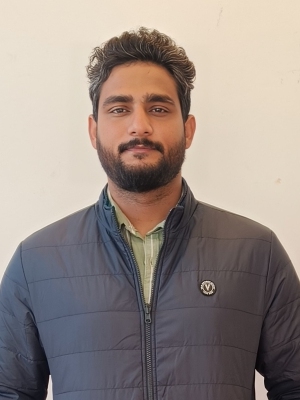YOUR BROWSER IS OUT-OF-DATE.
We have detected that you are using an outdated browser. Our service may not work properly for you. We recommend upgrading or switching to another browser.
 Born: 09 November 1992, India
Born: 09 November 1992, India
Room: 321B, building A2
Phone: +48 713204080
e-mail: manish.kumar@pwr.edu.pl
Hobby: reading, cooking, travelling, beer/wine, and playing sport game
ORCID: 0000-0002-9859-3793
Current Research
Previous Research
My previous research interest includes the design and synthesis of novel low molecular weight organoselenium compounds which can act as in multifunctional way i.e. radical-trapping as well as glutathione peroxidase (GPx)-like antioxidants. The designing is usually based on that organoselenium antioxidants will protect the lipid membranes and mtDNA against “oxidative stress” caused by overproduction of reactive oxygen species (ROS) and reactive nitrogen species (RNS) in cells. They would also be potentially useful for stabilization of organic materials such as polymers, oils, fluids and pulp products but also for treatment of diseases with a component of “oxidative stress”.
In this regards, ebslenamines and ebselenols are developed as novel organoselenium Se─N heterocyclic compounds carrying aminic and phenolic group in a very close proximity to the Se atom. The 77Se{1H} NMR spectroscopy traditional technique has been used to perform control redox reactions to investigate mechanistic/catalytic study and isolate important intermediate of organoselenium compounds. All developed organoselenium compounds inhibited the lipid peroxidation much more efficiently than α-tocopherol in two-phase lipid peroxidation model system and showed excellent GPx-like activities than parent ebselen. The single electron transfer (SET), hydrogen atom transfer (HAT), and proton-coupled electron transfer (PCET) mechanisms for the antioxidant properties of all developed catalysts have been supported by Density Functional Theory (DFT) calculations. Also, N-methylated ebselenamines were found to scavenge the ROS produced at low concentration (10 μM) with low toxicity effects and would have the therapeutic potential against autoxidation. It is anticipated that these compounds would have the potential to be used in several diseases caused by autoxidation, and thus, providing protection for mammalians from cell death.
Education and Research Positions
2023 – Present: Postdoc Fellow (Visiting Researcher) at Wroclaw University of Science and Technology, Poland in the Prof. Lukasz Berlicki Group
2023 - Ph.D. in Chemistry from Panjab University, Chandigarh, India.
Thesis Title: “Multifunctional Amino-Substituted Organoselenium Radical-Trapping Antioxidants: Syntheses and Biological Evaluations”
2015 - M.Sc. in Physical Chemistry, Deenbandhu Chhotu Ram University of Science and Technology, Murthal, Sonepat, Haryana, India
Professional Awards
2022 - International travel support from SERB (India govt.) to attend the ICCST-15 conference in Brazil
2019 - Senior Research Fellowship (SRF), Council of Scientific and Industrial Research (CSIR), New Delhi, India
2018 - GATE qualified in Chemistry
2016 - Junior Research Fellowship (JRF), Council of Scientific and Industrial Research (CSIR), New Delhi, India
Achievements
Conference and Workshop Attended (Selected)
Publications